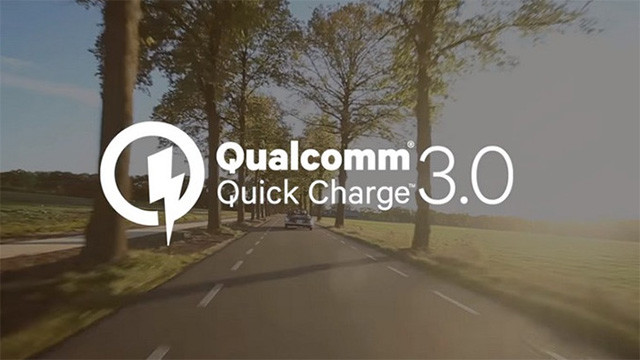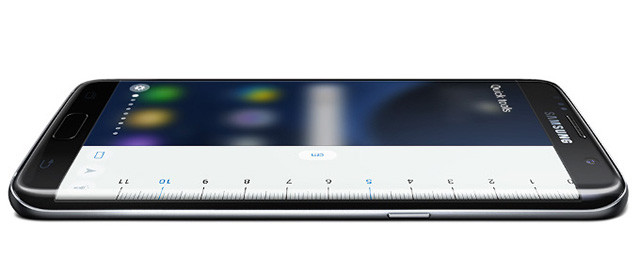Based on materials from android-softwares.com

'Innovation' … Such a favorite word of manufacturers. Everyone is trying to convince you that it is his product that is unique and that his innovative solution is not found in anyone else. However, innovations are also 'infectious' when, once they appear, a certain 'chip' quickly replenishes the arsenal of all phone manufacturers.
Sometimes it is curious to look at a sufficiently long period of time to see what functions, which were declared innovative, were destined to have a long life in more than one generation of devices. Therefore, we invite you to take a look at the innovations of the last five years and look at the five most important innovations that have appeared during this time, without which we can no longer imagine the modern world of smartphones.
Fingerprint reader and increased security with system-wide encryption

When you think about significant innovations in smartphones, the fingerprint scanner is probably the first one that comes to mind. At first we saw it in iPhone 5s, and then in top Android smartphones. Now almost all smartphones are equipped with a scanner, and this is no longer just a familiar function, it is part of the ecosystem that paved the way for simple mobile payments. Systems such as Android Pay, Apple Pay and Samsung Pay are based on the fingerprint scanner in your phone and they make payment easier and faster.
Of course, the most obvious benefit of a scanner is protecting your device. With encryption introduced at iPhone starting at iPhone 5s, and now with encryption in new phones at Android, you can be sure that if your phone is hit into the hands of intruders or you simply forgot it somewhere, your bank accounts (whose data is often stored on the phone) will not be compromised. And at the same time, no one can see your files and photos.
Fast and wireless charging technologies

If, according to the previous point, the devices on Android acted as catch-up, here they, on the contrary, are in the lead. Qualcomm's QuickCharge technology has enabled ever-increasing batteries to be charged much faster. Now flagships like the Samsung Galaxy S7 can charge in less than two hours, and even in half an hour you get enough charge.
Samsung stands out in the field of wireless charging, with its Galaxy series being one of the first in this area. It's so convenient to just put your smartphone on the charging mat and not think about the wires! However, do not forget that this way charging is slower and less efficient than conventional wired charging.
Super high resolutions

And again Android ahead of the rest: the only top-end devices that do not have ultra-high resolution Quad HD are iPhones. But even the 4.7 ″ display iPhone 6s with its 750 x 1334 pixel resolution seems to be clear enough to most. However, looking closer, you will see pixelation on the screen iPhone, while current Android devices, including the Galaxy S7, LG G5 and HTC 10, have a resolution of 1440 x 2560 pixels (Quad HD), and on their screens, pixelation is really hard to notice.
In terms of power consumption, high-resolution screens are more demanding, as well as demanding on the performance of the processor and graphics adapter, but chipset manufacturers now quite cope with these needs. Overall, we have come to the conclusion that we no longer need to discuss screen clarity in a smartphone, instead we can focus on color balance.
Smartphone cameras: optical image stabilization, 4K video, fast focus

Cameras in phones have changed a lot over the past five years. Their development is a complex process tied to improving sensor and lens technology, but there are three main features that have become the standard for all the best modern devices. These are optical image stabilization, 4K video and various types of fast focus technologies.
The name 'optical stabilization' speaks for itself, this technology first appeared in mainstream phones from Nokia, and then quickly spread among modern phones to Android, most top-end Android smartphones are equipped with it . What does it do for the image? It stabilizes and we get better, sharper footage, which is especially noticeable in low light conditions.
4K is the new standard for video, you get huge files, but you see dramatic improvements in sharpness, and you can use digital zoom more flexibly.
Finally, fast focusing could be, for example, the new Dual Pixel technology in the S7, phase focusing matrices and / or laser autofocus in many modern phones.
Curved screen

And finally, a feature that slowly but surely entered the world of smartphones to stay in it. After a few experimental niche devices, Samsung launched the Galaxy S6 Edge last year – and were surprised by the strong demand for the smartphone. This year, the Galaxy S7 Edge has improved the technology and added new options to the interface to take advantage of its benefits.
So far, we are far from phones that really bend and which, for example, can be wrapped around a hand like a bracelet and so worn. But we hear prototypes that look crazy, but in the end will result in the fact that in the not too distant future we will have access to shape-shifting phones.
Now is the time to ask you, dear readers, which of the mentioned technologies do you think are really important? For which have you already voted in rubles or are you just going to, and which have passed you? Or maybe something wasn't on the list? Welcome to comments.
